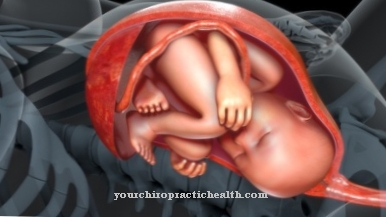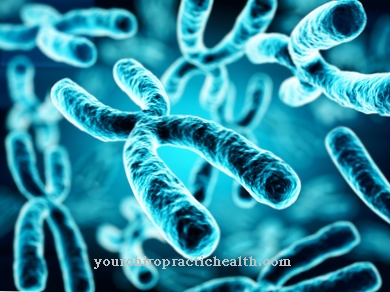The Interphase refers to the section of the cell cycle that lies between two cell divisions. In this phase the cell performs its normal functions and prepares for the next mitosis. The correct course of the cell cycle is monitored at two control points of the interphase and one control point during mitosis.
What is the interphase?

The interphase is a part of the cell cycle, which consists of mitosis and the phase between cell divisions. The cell spends over 90 percent of the time in the cell cycle in the interphase. Both the interphase and the mitosis are again divided into different sections.
The cell cycle is a recurring cyclical process, which is divided into cell growth and cell division. Several control mechanisms are built into this process in order to avoid disturbances in cell reproduction.
Cell reproduction and cell growth must be in a balanced relationship to one another. In embryogenesis and the physical growth phases, mitosis predominates within the cell cycle.
The interphase is divided into three sections. These are phases G1, GS and G2. The letter G stands for the English word 'gap' for 'gap'. After phase G1, depending on the type of cell, a longer rest phase can follow, which is referred to as G0.
Function & task
After cell division (mitosis), there is always a phase that prepares the next cell division. That is the interphase. The function of the body is always dependent on the formation of new cells and the death of old cells.
In the course of life there is a constant renewal and regeneration process. Even when an organism is very old, the cell cycle still works, although cell division slows down more and more until then.
During mitosis, one cell creates two new cells with identical genetic material. The genetic material is present as DNA in the chromosomes. The chromosomes in turn consist of one or two chromatids. A chromatid is composed of a DNA double strand and chromatin proteins.
In the G1 stage of the interphase, the chromosomes each contain only one chromatid, because in the context of mitosis the two identical chromatids of the chromosome were separated and each divided between the two new cells. The G1 stage of the interphase is mainly characterized by cell growth and the formation of new cell organelles. Furthermore, protein biosynthesis and RNA synthesis take place.
At this stage the cell reaches its typical nucleus-to-plasma ratio. If this ratio is exceeded, the cell can no longer perform its specific function at this stage. The cell goes into the GS or G0 stage.
During the GS stage (S for synthesis), the cell is still in the cell cycle and synthesizes new DNA to replicate identical chromatids. An identical copy is made for each chromatid. They are connected to one another within the chromosome via the centromere. So the chromosome now consists of two chromatids. The centrosomes also double. This creates the basis for the next cell division.
After the G1 stage, however, a G0 stage can also follow. During the G0 stage, the cell is in a reversible resting phase, in which it is not prepared for the next mitosis. Depending on the cell type, the cell then takes on important functions for the organism. The rest phase can be of different lengths. For example, nerve cells usually no longer divide and stem cells can also stay in this stage for a very long time.
However, if the cell is already in the GS stage, the next cell division will soon take place. After the GS stage, the G2 stage follows the interphase. In this phase, protein and RNA synthesis continues in preparation for the next mitosis. At the same time, a check is carried out to determine whether the replication of the chromatids was error-free.
Overall, the interphase lasts about 23 hours with about 10 hours for phase G1, 9 hours for phase GS and 4 hours for phase G2. The subsequent mitosis is completed in only about 40 minutes. A complete cell cycle therefore takes about 24 hours. If the interphase is interrupted by rest phases, however, the times for the overall process are completely different. This differs from cell type to cell type.
Illnesses & ailments
Disruptions in the course of the cell cycle can have devastating health consequences. Both in the growth phase and in stable phases of life, the right balance between cell renewal and the death of old cells is always important. If this relationship is disturbed, malignant tumors can develop. Cancer is always characterized by uncontrolled cell growth. The regulatory mechanism which stops the ongoing cell division fails within the tumor. The causes are varied.
However, there are three control points in the cell cycle, which control the proper course of the processes and at the same time ensure the correct distribution of the chromosomes. There are two control systems within the interphase and one control system within the cell division phase. During mitosis, a check is carried out at the metaphase control point to determine whether all chromosomes are attached to the spindle. In the interphase there is the G1 control point and the G2 control point. Here it is checked whether the environmental conditions are favorable for cell division. At the G2 checkpoint it is checked whether the chromosomes have two chromatids. Cell division is then regulated by means of a complex of cyclin-dependent kinase and cyclin.












.jpg)



.jpg)










.jpg)
